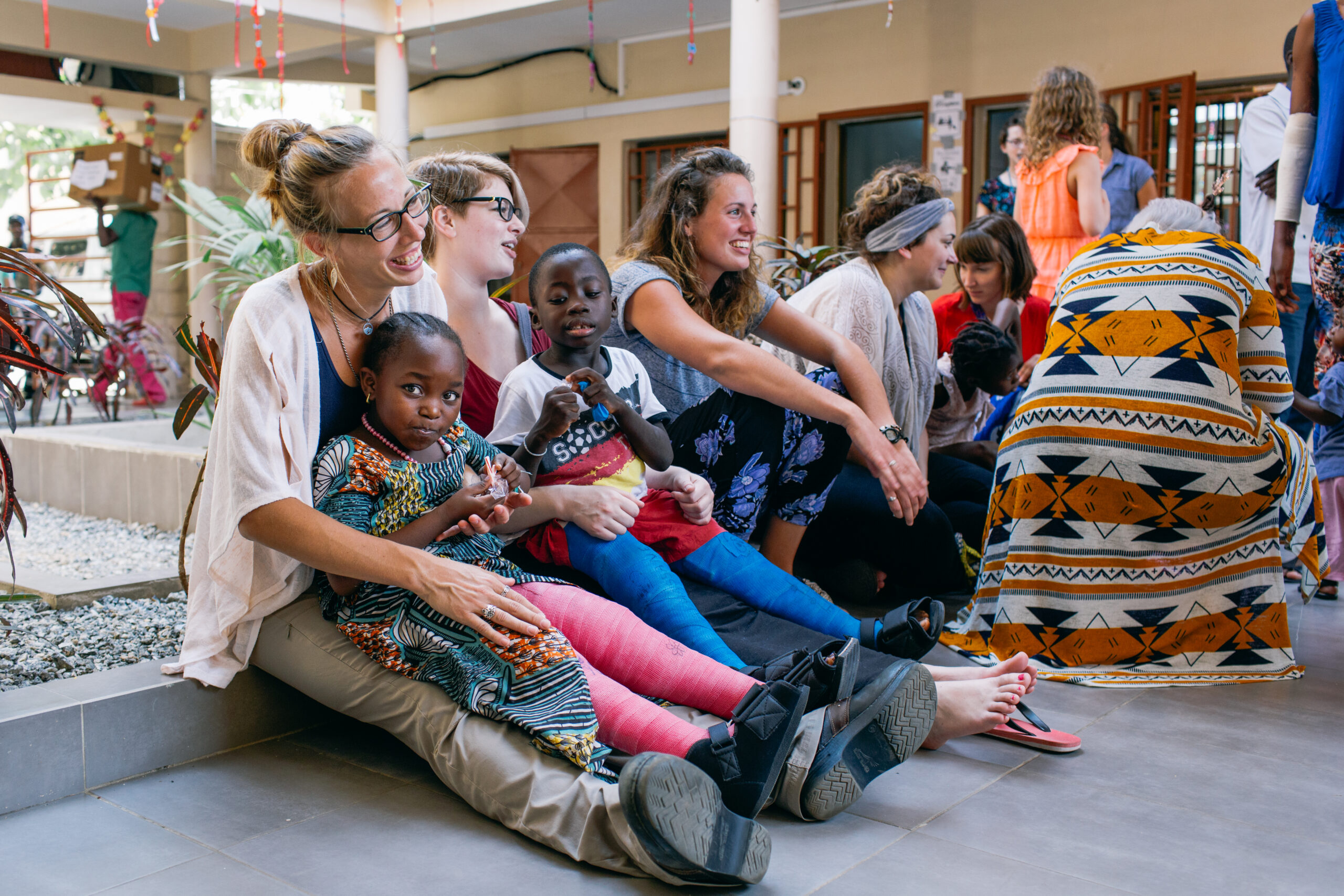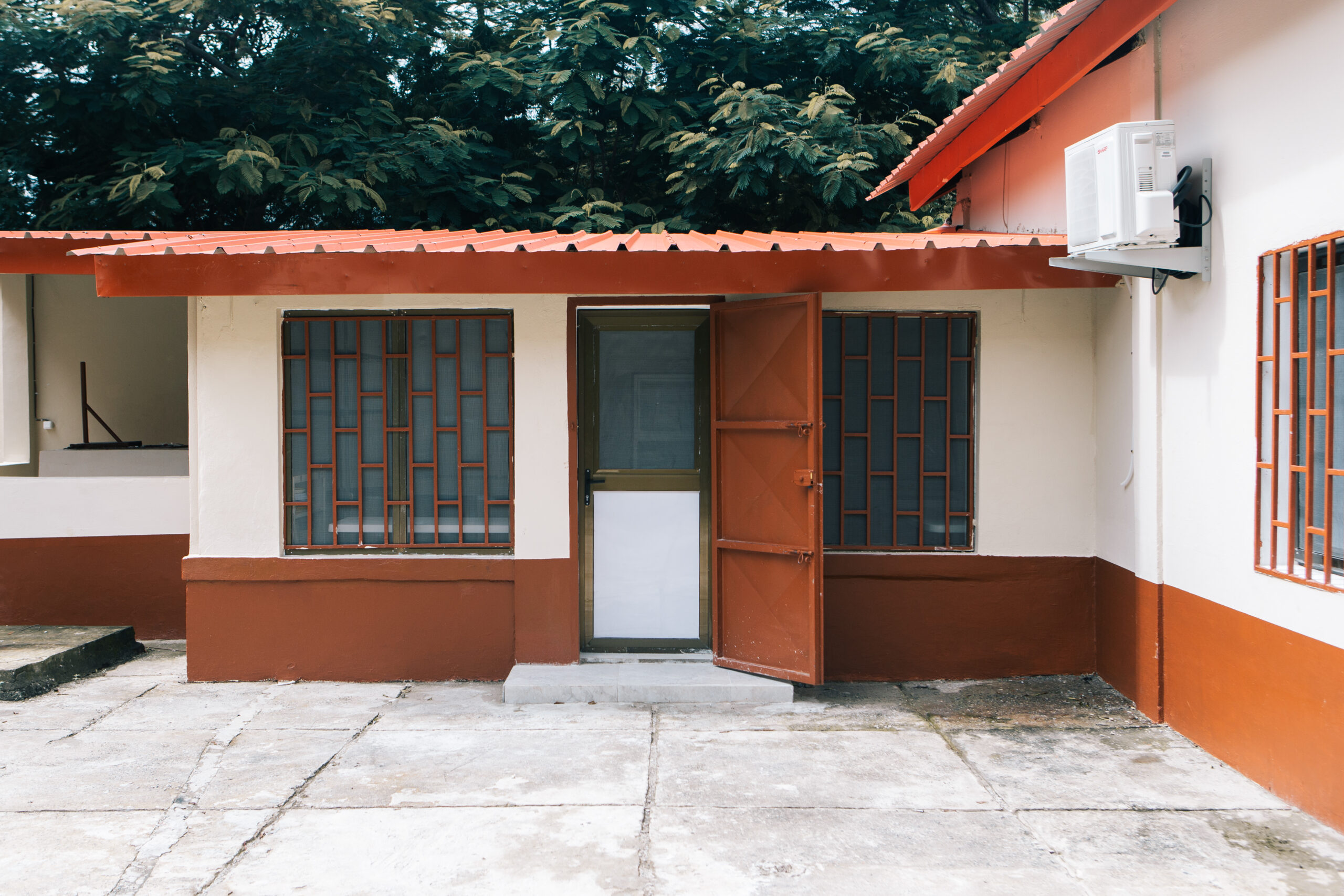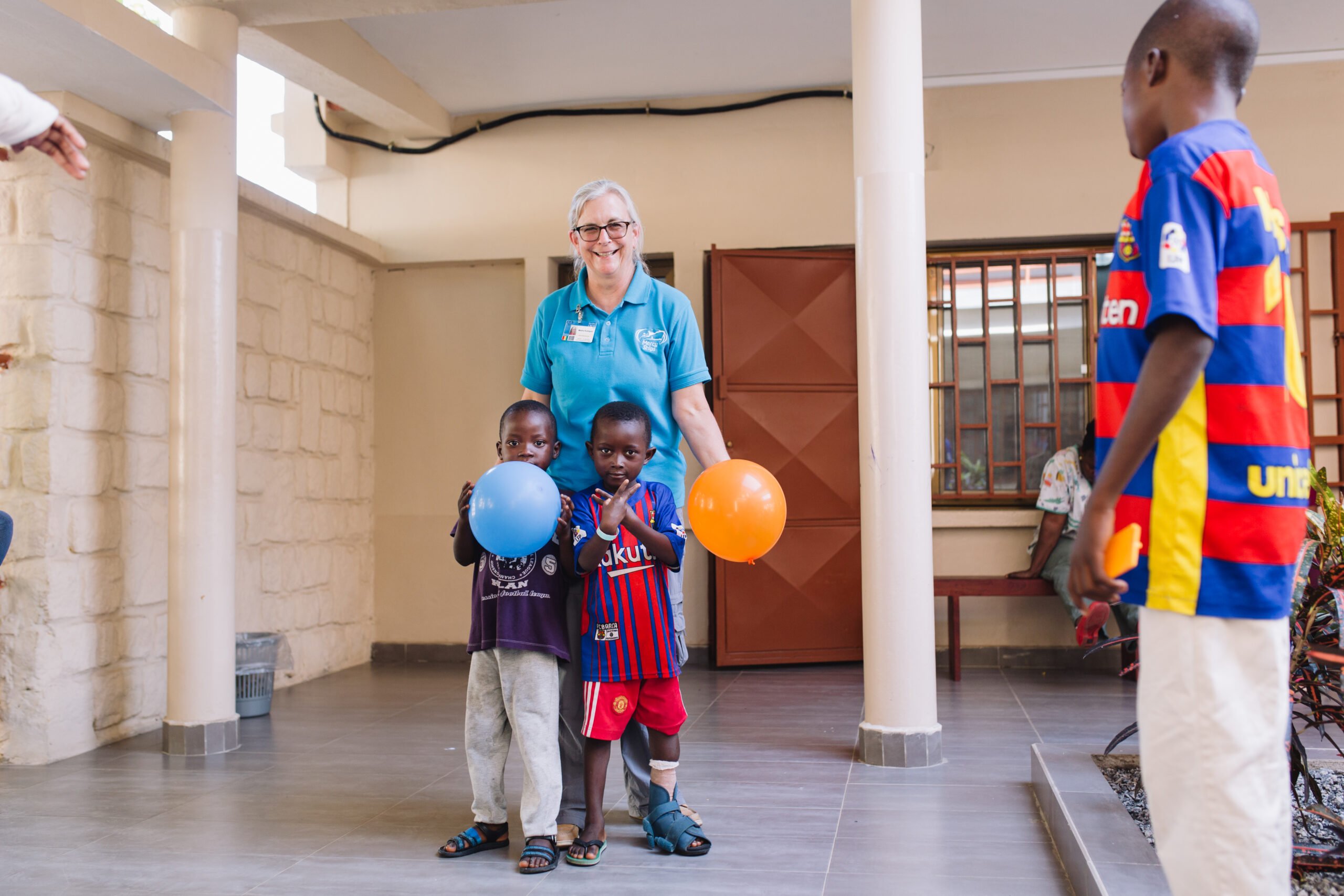
To reduce the need for multiple trips, Mercy Ships establishes a Hospital Out-Patient Extension (HOPE) Center to provide housing for patients and caregivers near the ship. After surgery, the HOPE center offers a safe, clean environment that promotes effective recovery while maintaining easy access to the ship for follow-up care.
The HOPE center also frees bed space in the ship’s hospital ward, so we can help more people at each port of call.
The HOPE Center began in 2009. Since then, every field service our advance team visits the country we are partnering with before the ship arrives to find existing structures that can be renovated as housing for recovering patients.
“The HOPE Center is its own little community,” Martha Rodriguez, HOPE Center Manager, said. “The patients help out and encourage one another. The post-op patients greet the new patients that come, make them feel welcome and reassure them about their stay with Mercy Ships.”
While it serves as a home for those healing from orthopedic and reconstructive surgeries, operations that can take months of rest and rehabilitation to recover, it is also a place for education.
Many times babies brought to our hospital ships have suffered severely from malnourishment due to their conditions. Their small sizes make operating dangerous, so their mothers come with them to the HOPE center in order to join our infant feeding program. While there, the mothers learn more about nutrition and the best ways to feed their children in the future.
“There was a baby in Benin with a cleft lip and palate, who was severely malnourished and did not have long to live. I could sense from the mother that she had started to lose hope that her daughter would survive,” Rodriguez said. “We got her started in the infant feeding program and soon she was big enough for surgery. The joy I saw in the mother’s eye as she gazed upon her healthy and growing daughter cannot be described with words.”
Dr. Gary Parker, who has served for over 30 years as a volunteer surgeon with Mercy Ships, said that hope is the one thing many patients lack when they arrive.
“For hope to be credible in the future, it must be tangible in the present,” Dr. Parker said.
And the HOPE Center provides a hope-filled space where patients can experience this powerful healing component as they recover after surgery. Here, patients and their caregivers are given clean beds, warm meals, attentive care — and, most importantly — hope. Mercy Ships believes that hope is an essential part of the healing process for every patient.
While the ship is where the surgeries take place, the HOPE Center is where patients experience more of the kindness and compassion that characterize how Mercy Ships loves people. And hope plays an invaluable role in helping these people heal both physically and emotionally.
“It is a privilege to witness not only the physical transformation of the patients but, more importantly, the emotional and social transformation,” Rodriguez said. “The patients are loved for who they are and not the condition they suffer from; it is beautiful!”

